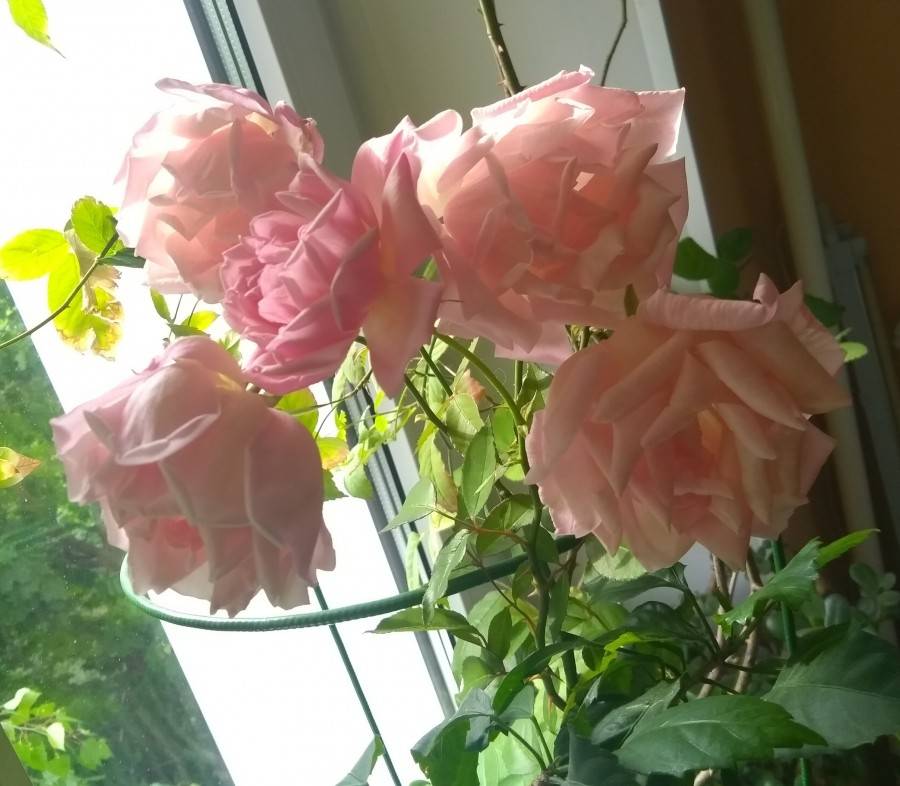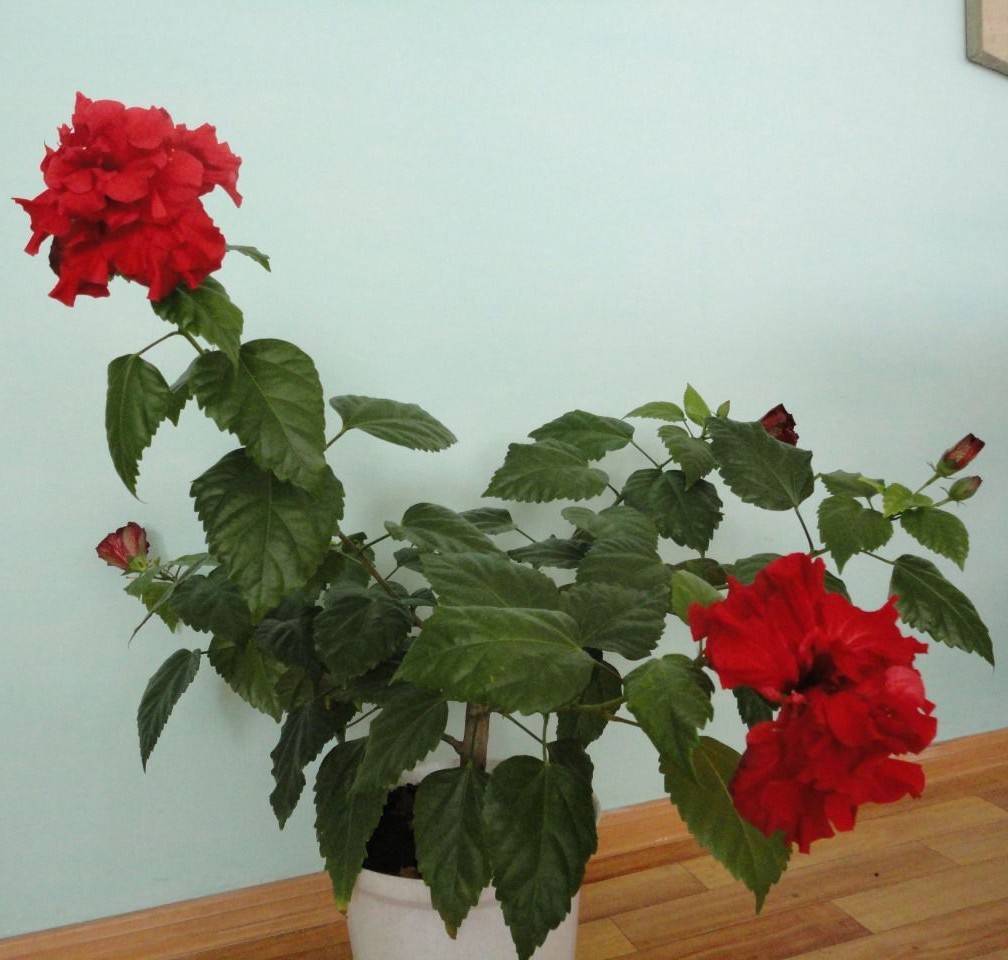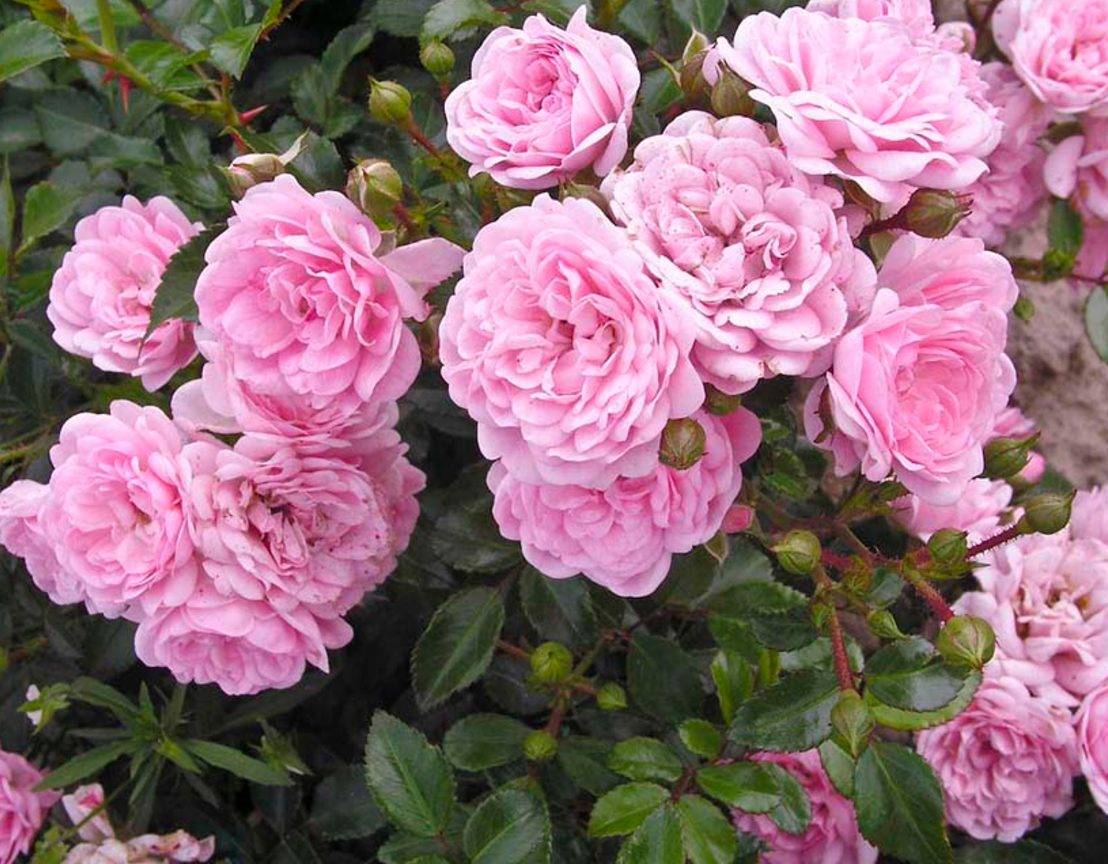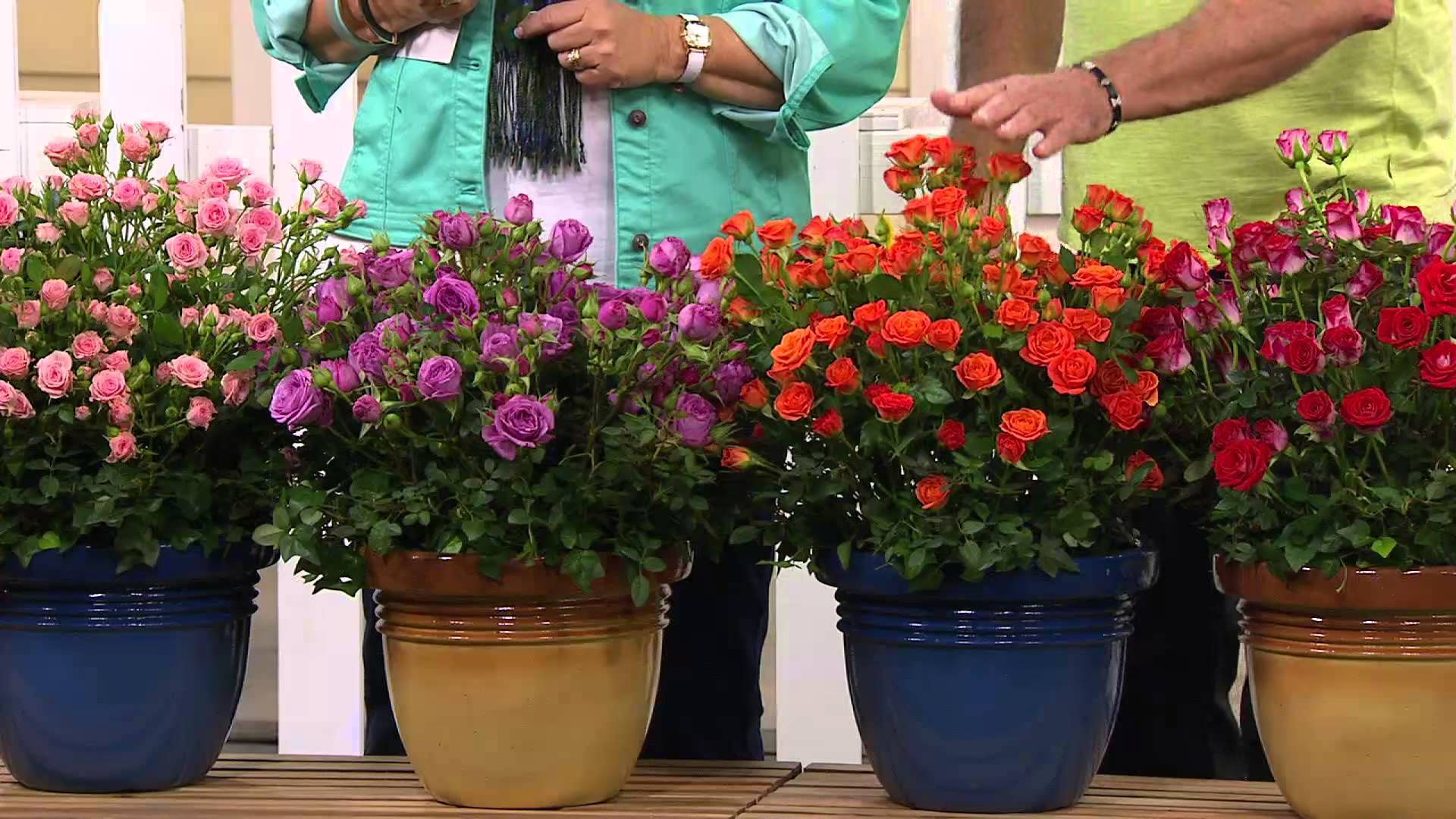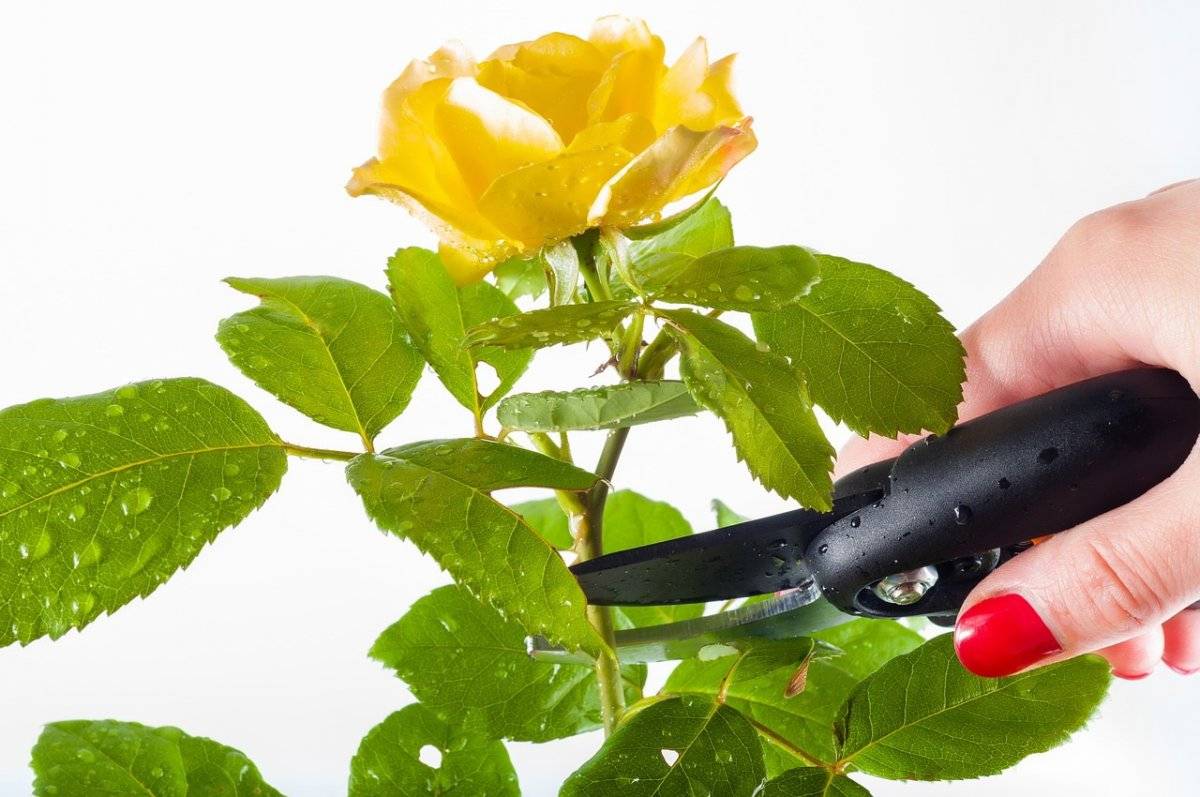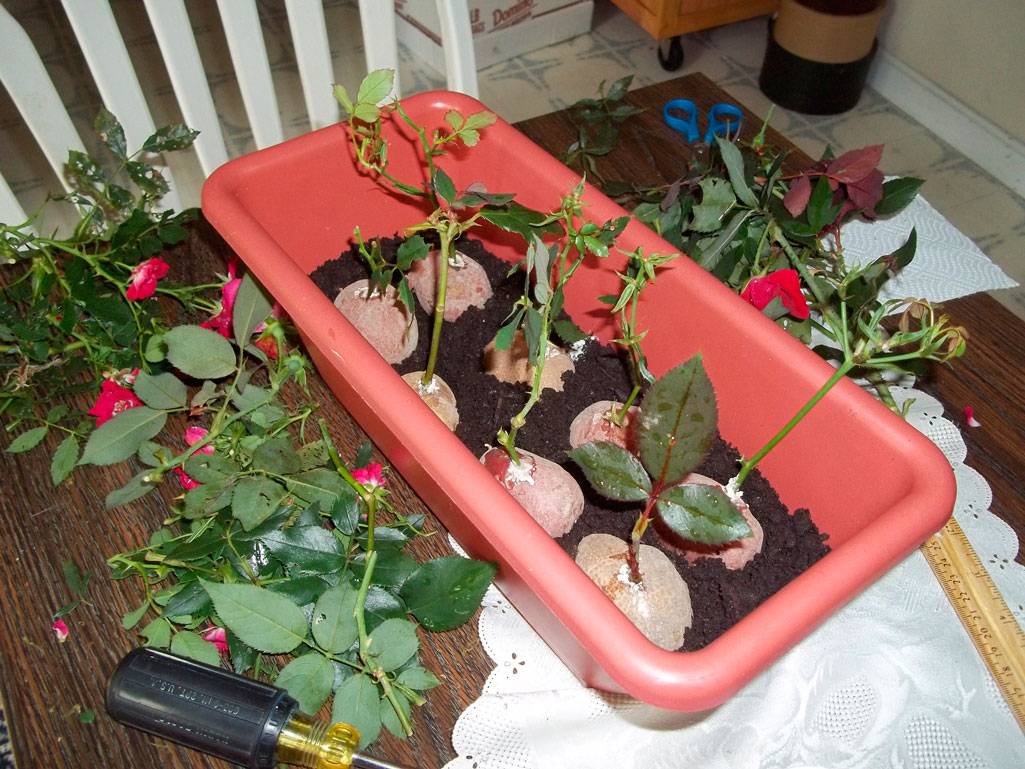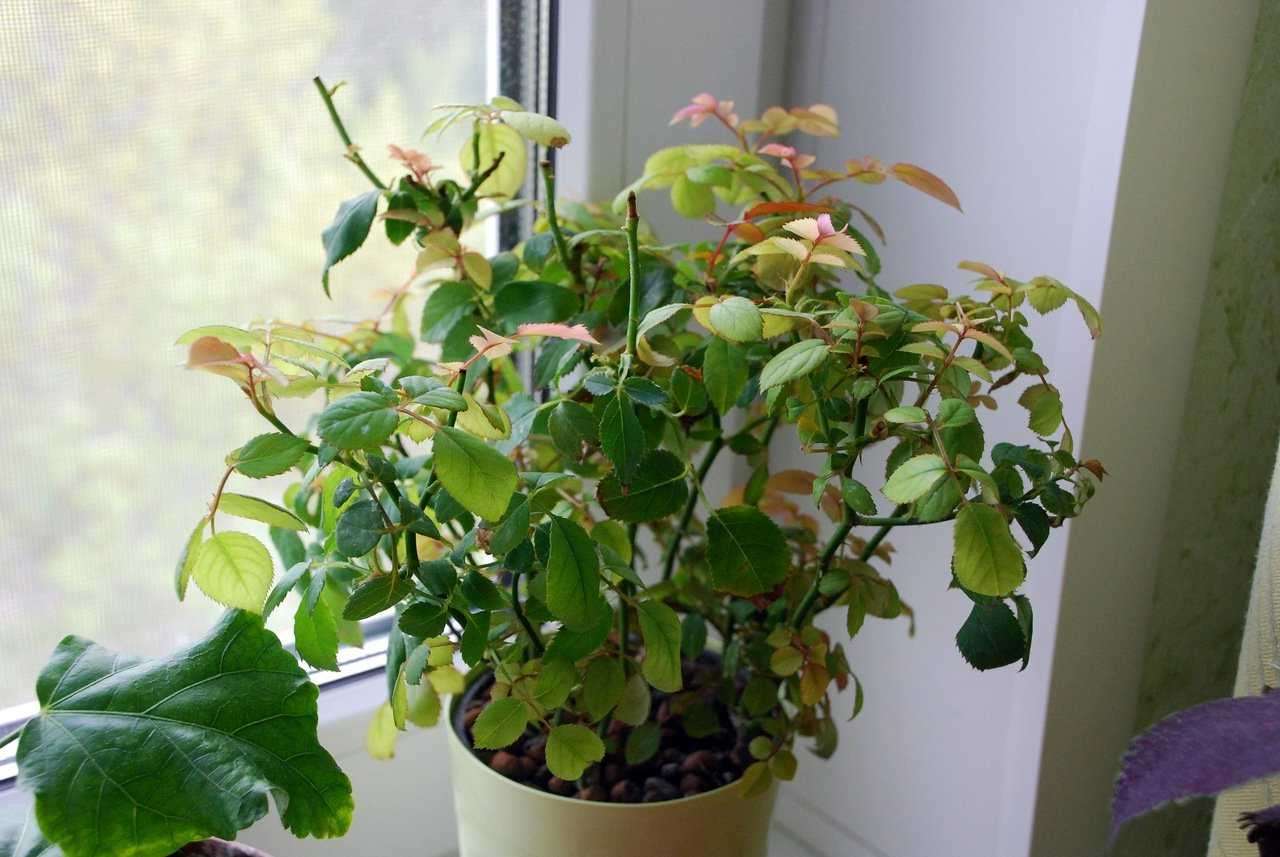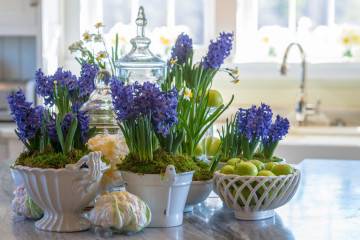How to care for a room rose in a pot
Content:
- How to choose a room rose
- The most popular varieties for growing in an apartment
- Flower adaptation after purchase
- How to care for a rose at home
- The nuances of caring for roses in a pot at different times of the year
- Features of flowering plants
- Flower reproduction methods
- Growing problems, diseases and pests
Indoor rose has extraordinary beauty, but requires special attention. Blooming home rose bushes can decorate any apartment, while for their successful cultivation, you need to have some skills, as well as know the tricks and secrets of caring for these amazing flowers.
How to choose a room rose
You should choose a beautiful, strong healthy flower. The stems should be smooth and green with no dark spots on the surface. The foliage of a healthy flower has a dark green color, firmly adheres to the stems, covering them from bottom to top.
When a buyer sees beautiful bushes that are covered with rich, bright buds, he immediately thinks about how good these flowers might look in his home. However, it is worth noting that the magnificent appearance of the plant can be the result of the use of stimulants that give the flower a presentation. Such preparations have a negative effect on the life of plants outside the greenhouse conditions.
Roses that bloom in the winter are not recommended to purchase, since flowers grown under artificial conditions are deprived of winter dormancy, therefore, the natural flowering time is shifted to the second half of winter. Despite the temptation to buy the flower you like, it should be understood that there is no guarantee that the rose will be able to live for more than one season. Often, these flowers begin to wither immediately after flowering.
The most popular varieties for growing in an apartment
There are many different varieties of roses available for indoor cultivation. The following types are considered the most popular:
Bengali
Very unpretentious look. The height of the bushes reaches 50 cm. The foliage and flowers are rather small. Saturated bright inflorescences delight the owners throughout the year, with the exception of short rest breaks. Most often, growers are interested in the Pink Grothendorst variety, which blooms in both spring and summer. Its flowers are able to keep their freshness for a long time.
Miniature
The height of the bushes is up to 30 cm. Shrub roses are unpretentious and reproduce well. The most famous variety is Cardana. The variety of colors of flowers is quite large, while it is constantly replenished with new tints. The Green Ice variety also often attracts the attention of flower growers. Its leaves are colored dark green, and the delicate inflorescences have a pale green color.
Tea rooms
This species is similar to Bengal roses. The plant has terry inflorescences that emit a unique aroma. The best varieties are Marshal Niel, which has yellow buds, and Nifetos, with pale pink petals.
Polyanthus
This group pleases with a multi-flowered variety of roses. Terry and semi-double inflorescences have very beautiful buds. By themselves, the bushes are quite branched, the foliage is large. One of the most popular varieties is Triumph, which has a wonderful aroma emanating from red flowers.
Flower adaptation after purchase
After purchasing a flower, you must immediately release it from the plastic cup, in which it is usually placed for sale. Then remove fallen leaves from the soil surface and examine the plant for diseases and parasites. It should be remembered that the first month after acquisition is the most difficult and stressful period for the culture. You need to be prepared for the flower to drop buds and flowers (foliage may also fall off). However, when the adaptation period comes to an end, the flower begins to show potential for growth and begins to bloom again.
How to care for a rose in a pot at home? Indoor rose needs home care immediately after purchase. Even if, upon external examination, traces of pests are not visible, it is still recommended to rinse the purchased flower with warm water. This preventive measure will protect the plant from spider mites. Also, a rose can be treated with one of the systemic preparations for pests.
When buying an already blooming or dying rose, it is recommended to transfer it into a larger pot (without destroying the earthen lump), while adding a little nutritious soil to the container.
How to care for a rose at home
Rose care at home requires careful, otherwise the flower will wither. Although it does not have much difference from that of other indoor cultures. The flower needs conditions under which it can reveal its potential to the maximum.
What to consider and how to care for a room rose is described below.
Illumination and temperature conditions
Homemade rose in a pot is a light-loving plant. At the same time, overheating of the bushes can harm the culture, so the pots should be placed on the west or south-east side of the room.
Watering rules and humidity
Drying out the soil is very dangerous for roses, so watering should be done regularly. In hot periods, pink flowers should be watered immediately after the soil dries. At the same time, it is important not to overdo it with moisture in order to avoid soil acidification. When the rose has faded, watering should be reduced.
Top dressing and soil quality
Since moisture is very poorly retained in planting containers, the plant will need frequent feeding. Also, roses are important for air and moisture permeable soil.
Flower container size
The flower container can be of any size and shape, it doesn't matter. It is important that there is enough space in the pot for root development and free air circulation.
Pruning and replanting
The flowers of the rose should be cut to the first leaf, the weakly developing stems should be removed up to 10 cm. The procedure should be carried out before the onset of winter. It is recommended to leave up to 5 buds on the branches.Overgrown bushes need to be transplanted into larger containers.
The nuances of caring for roses in a pot at different times of the year
You need to understand that the specifics of caring for indoor plants depends on the time season. Novice growers often ignore this factor, which negatively affects the culture.
In the spring
In the spring, roses develop more actively, therefore, during this period, the flower needs abundant watering and feeding. In the evening, he needs to be sprayed from a spray bottle. The water should be boiled and cool enough. After the end of the frost, the flower pots should be transferred to the open air. To begin with, it should be placed in the shade and only after 14-15 days taken out in the sun.
In summer
In the heat of summer, it is important to avoid overheating. When placing a flower on a windowsill, it is important to ensure that the lighting is uniform. To do this, the pot must be periodically turned with its back to the window.
In autumn
In the autumn, at low night temperatures (up to 15-12 ° C), roses should be placed on the inner windowsill on the south side. Upon completion of flowering, the flower must be prepared for winter - reduce watering (leave the soil dry for a couple of days before watering) and top dressing. You also need to trim.
In winter
In winter, the development of the flower is suspended, it sheds foliage. Watering should be sparse, and sometimes the plant should be sprayed. After the soil dries out, watering should be done only after 2-3 days. Recommended air temperature 15-17 ° C.
Features of flowering plants
Like any other culture, the rose has its own distinctive features, which are mainly manifested during the period of active flowering.
A period of activity and rest
There are two periods of annual development of roses:
- vegetative;
- rest period.
The growing season for a room rose is a time of active growth. Its beginning falls on the end of March - beginning of April. At this moment, the pink bushes acquire the first young leaves and shoots. By the end of spring, the first blossoming buds can be expected. Flowering usually lasts until the end of August. For some varieties, it can drag on until the New Year holidays.
After a violent flowering, the plant needs rest, therefore, for a certain period, the rose enters a dormant phase. With the onset of this state, it is recommended to prune and create optimal conditions for the bush.
Types and shape of flowers
Roses have a wide variety of types and shapes of flowers. Many growers admire the goblet shape; densely double rosette and cup-shaped flowers are especially popular. Flat-shaped flowers have a natural charm. Pompom and spherical flowers look very attractive.
Flower reproduction methods
Indoor roses can be propagated in several ways. Most often, the flower is propagated by cuttings and seeds.
Propagation by cuttings
Cuttings obtained after pruning the plant are usually used as rooting material. Rooting is best done as follows:
- During the flowering period (in June-July), cut off 2 leaves and the top with a wilted bud from the stems.
- After the buds of the shoots swell (until the leaves appear), cut the cuttings from the stems with a garden tool.
- Remove the lower foliage from 20-centimeter stems.
- At the top of each segment, 2 sheets should be left.
- Then plant the cuttings in pots.
Seed propagation
Seed collection should be done at the end of August before the flowers ripen. After collecting, you need to do the following:
- After removing the seeds from the seed pods, they must be washed with hydrogen peroxide in a sieve.
- Prepare a cloth or cotton pad.
- Place the seeds on one pad and cover them on top with the other.
- Place seeds in a tight ziplock bag and refrigerate. Ventilate from time to time.
- After the seeds have germinated, they must be sown in pots and placed indoors with good lighting.
- Germination of sprouts lasts until spring, after which the sprouts can already be planted in pots.
Growing problems, diseases and pests
Growing roses at home is not an easy task. With improper care, the risk of disease or pest damage increases significantly. Homemade roses most often suffer from the following ailments:
- powdery mildew. Symptoms: twigs and foliage are covered with a white bloom;
- blackleg. Symptoms: darkening of the base of the trunk, lethargy and weakness of the flower;
- rust. Symptoms: The leaves are covered with red spots and begin to dry out.
In addition, indoor roses can be attacked by spider mites, aphids, thrips, mealybugs and other sucking parasites.
How to deal with them
At the first signs of powdery mildew, the plant should be treated with a fungicide. Typically used are foundazol, phytosporin or copper sulfate. In the case of a black leg, as a rule, the bush along with the soil is destroyed, and the pot is carefully processed. In case of rust, the plant must be treated with copper oxychloride or Bordeaux liquid.
In the case of parasites, the flower should be rinsed with warm water under the shower (the soil should be covered with plastic wrap), and after drying, the flower should be treated with an insecticide. As a preventive measure, it is recommended to periodically spray and bathe the plant (up to 1 time per week).
Indoor rose is a lovely but somewhat capricious plant. Only proper care will allow the decorative rose to bloom for many years.

